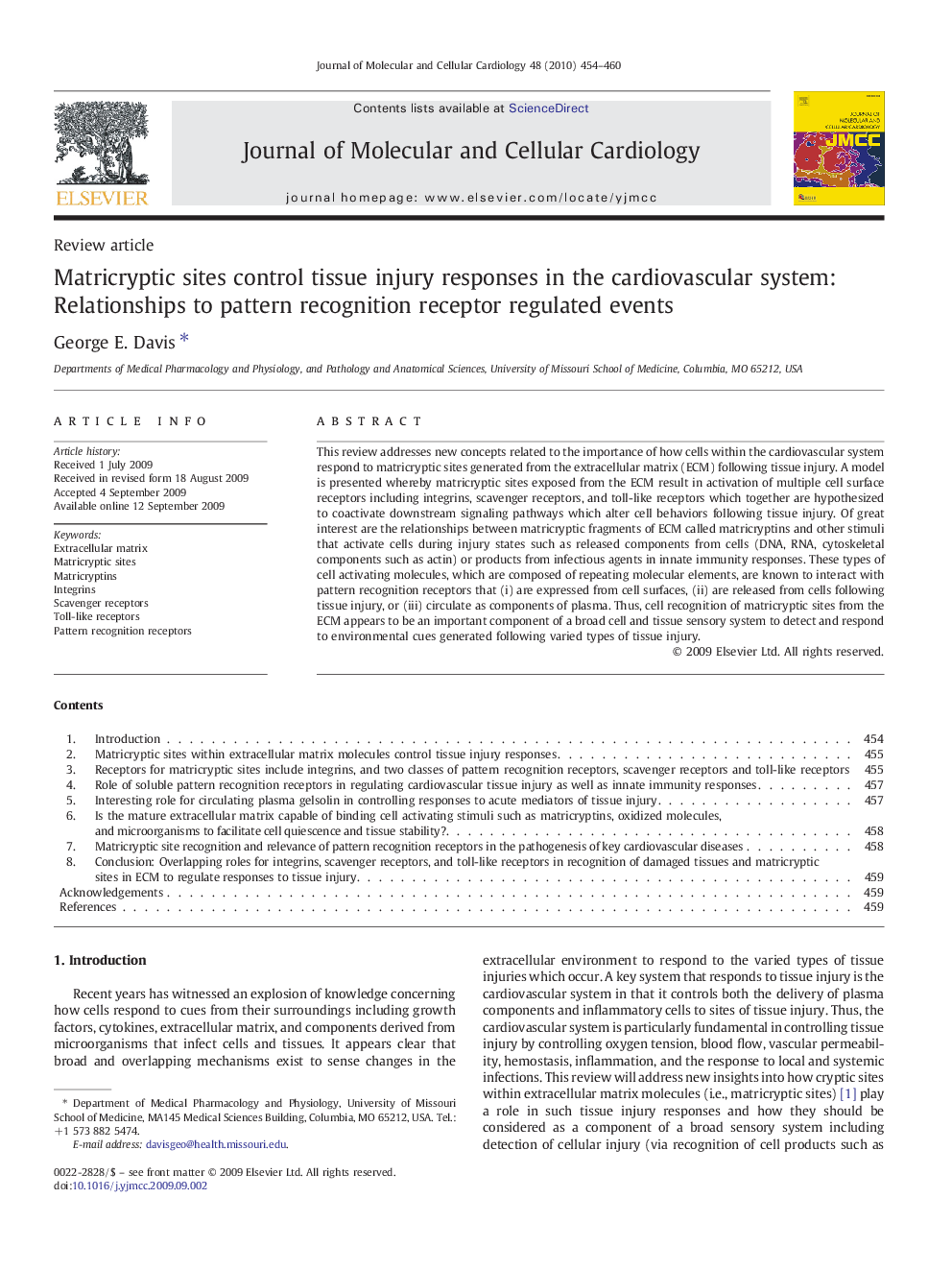| Article ID | Journal | Published Year | Pages | File Type |
|---|---|---|---|---|
| 2191154 | Journal of Molecular and Cellular Cardiology | 2010 | 7 Pages |
This review addresses new concepts related to the importance of how cells within the cardiovascular system respond to matricryptic sites generated from the extracellular matrix (ECM) following tissue injury. A model is presented whereby matricryptic sites exposed from the ECM result in activation of multiple cell surface receptors including integrins, scavenger receptors, and toll-like receptors which together are hypothesized to coactivate downstream signaling pathways which alter cell behaviors following tissue injury. Of great interest are the relationships between matricryptic fragments of ECM called matricryptins and other stimuli that activate cells during injury states such as released components from cells (DNA, RNA, cytoskeletal components such as actin) or products from infectious agents in innate immunity responses. These types of cell activating molecules, which are composed of repeating molecular elements, are known to interact with pattern recognition receptors that (i) are expressed from cell surfaces, (ii) are released from cells following tissue injury, or (iii) circulate as components of plasma. Thus, cell recognition of matricryptic sites from the ECM appears to be an important component of a broad cell and tissue sensory system to detect and respond to environmental cues generated following varied types of tissue injury.
